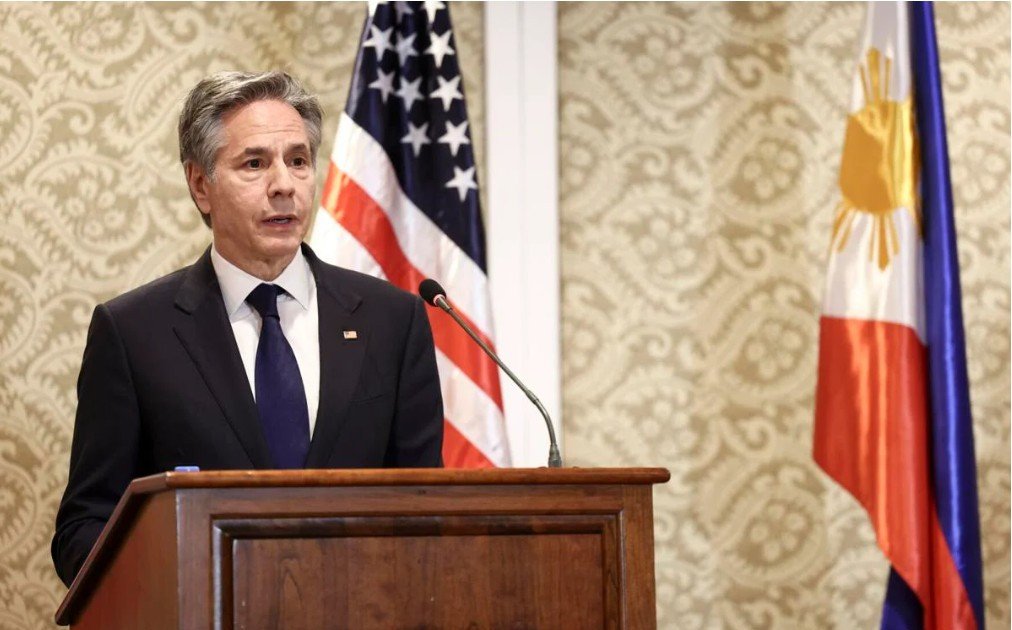The United States has once again reaffirmed its unwavering commitment to the defense of the Philippines, reinforcing the long-standing alliance between the two nations. This reaffirmation comes amid increasing regional tensions and underscores the importance of maintaining security and stability in the Indo-Pacific region. The U.S. government has emphasized the significance of the Mutual Defense Treaty (MDT) and its obligations to support the Philippines in times of need. This article delves into the strategic importance of this alliance, its historical context, and its implications for regional security.
### The Historical Context of U.S.-Philippines Relations

The alliance between the United States and the Philippines dates back to the early 20th century when the Philippines was a U.S. territory. Following World War II, the two nations signed the Mutual Defense Treaty in 1951, which remains a cornerstone of their security partnership. Over the decades, the U.S. has played a crucial role in assisting the Philippines in various security and defense initiatives. The commitment to mutual defense has been reaffirmed multiple times, especially in response to regional threats and geopolitical shifts.
### The Mutual Defense Treaty (MDT) and Its Implications
The Mutual Defense Treaty between the U.S. and the Philippines establishes that both countries will support each other in case of an armed attack on either party in the Pacific region. This treaty remains a fundamental aspect of their military cooperation. The recent reaffirmation by U.S. officials serves as a strong message to potential aggressors that any hostile actions against the Philippines will be met with a resolute response.
### Strengthening Military Cooperation

In recent years, the U.S. and the Philippines have intensified their military collaboration through joint exercises, intelligence-sharing, and defense technology transfers. The Enhanced Defense Cooperation Agreement (EDCA), signed in 2014, has allowed for the rotational presence of U.S. forces in key Philippine military bases. This agreement enhances interoperability between the two nations’ armed forces and strengthens their ability to respond to regional security challenges.
### Regional Security and Geopolitical Significance
The reaffirmation of U.S. commitment to the Philippines’ defense is not only a bilateral matter but also a critical component of regional stability. The South China Sea dispute, involving multiple claimants including the Philippines, has heightened tensions in the Indo-Pacific. The U.S. has consistently supported the Philippines’ sovereign rights and has conducted freedom of navigation operations (FONOPs) to counter excessive maritime claims. This strategic posture deters aggression and promotes adherence to international law, particularly the 2016 arbitral ruling that invalidated China’s expansive claims.
### Countering Emerging Threats

Apart from traditional military threats, the U.S. and the Philippines also collaborate on counterterrorism efforts, cyber defense, and disaster response. The fight against extremist groups in the southern Philippines, particularly in Mindanao, has benefited from U.S. intelligence and training support. Additionally, humanitarian assistance and disaster relief operations further solidify the partnership between the two nations.
### Economic and Diplomatic Dimensions of the Alliance
Beyond defense, the U.S.-Philippines alliance extends to economic and diplomatic spheres. The United States remains one of the Philippines’ largest trading partners and investors. Strong economic ties contribute to regional prosperity and complement the security cooperation between the two nations. Diplomatic engagements, including high-level dialogues and strategic partnerships, reinforce the shared vision of a free and open Indo-Pacific.
### Challenges and Future Prospects

Despite the strong alliance, challenges remain. Political dynamics, public sentiment, and external pressures can influence the trajectory of U.S.-Philippines relations. However, the reaffirmation of commitment by both nations indicates a continued focus on strengthening their partnership. Future developments may include expanded defense agreements, increased maritime security cooperation, and greater integration of economic and security strategies.
### Conclusion
The United States’ reaffirmation of its ironclad commitment to the defense of the Philippines underscores the enduring strength of their alliance. In an era of evolving security threats and geopolitical complexities, this partnership plays a crucial role in maintaining regional stability and protecting mutual interests. As both nations continue to enhance their military, economic, and diplomatic cooperation, their alliance remains a vital pillar of security in the Indo-Pacific region.
